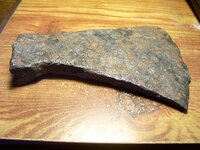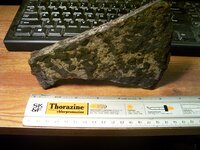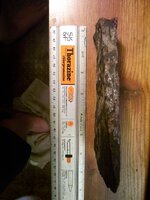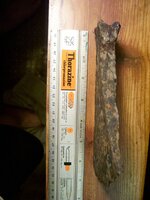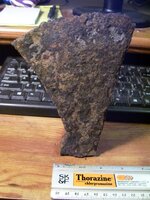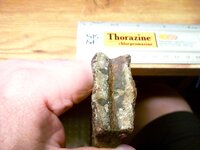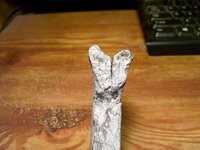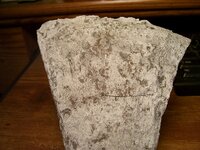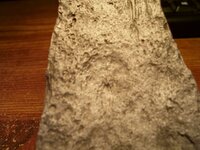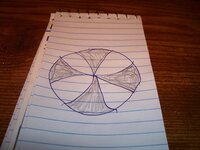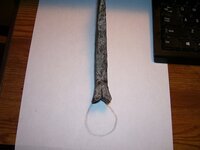Find's Treasure Forums
Welcome to Find's Treasure Forums, Guests!
You are viewing this forums as a guest which limits you to read only status.
Only registered members may post stories, questions, classifieds, reply to other posts, contact other members using built in messaging and use many other features found on these forums.
Why not register and join us today? It's free! (We don't share your email addresses with anyone.) We keep email addresses of our users to protect them and others from bad people posting things they shouldn't.
Click here to register!
Need Support Help?
Cannot log in?, click here to have new password emailed to you
You are using an out of date browser. It may not display this or other websites correctly.
You should upgrade or use an alternative browser.
You should upgrade or use an alternative browser.
Ace head ID
- Thread starter TerryEastTexas
- Start date
TerryEastTexas
Well-known member
sorry double post
Ronstar
Well-known member
TerryEastTexas
Well-known member
Thanks for posting that Ronstar.
Steve(Can)
Well-known member
Hey Terry, can you post a few more pics please, showing top and bottom view and side views that show the entire axe along side a tape measure or ruler. Thanks!I can't id this one. I've had some to say it's french trade axe but I'm not sure. What do you think. A couple of inches is missing off the back.
TerryEastTexas
Well-known member
TerryEastTexas
Well-known member
Ok Steve. Here you go. Don't forget there are approx. 2" missing off the back where the handle went.
View attachment 8171View attachment 8172View attachment 8173View attachment 8174View attachment 8175
Steve(Can)
Well-known member
Thanks Terry... from what I can see, you have a french trade axe, also known as a biscayne axe. These axes were made by forging a strip of wrought iron around itself to form the poll and the eye of the axe head. A stip of carbon steel was often inserted into the cutting end and forge welded so the axe would keep an edge. One of the distinquishing features of this type of axe is the visible joint at the front of the eye formed by the metal being folded over on itself and forge welded together. This seam is generally visible when viewed from the bottom and top of a biscayne axe head and shows very clearly in your pics.
The trade of these axes in North America dates back to 1603, recorded as part of the cargo brought into the St. Lawrence river and into the Great Lake region by French explorer Champlain. Up until this time, the natives were using stone axes and these became a highly sought after trade item between the French and Huron tribes in exchange for fur, and then traded from tribe to tribe. When Captain John Smith established the Virginia Colonies just a few years later, he reported the tribes of that area in possession of these iron axe heads. From the French to the Hurons, and then from tribe to tribe, these axe heads quickly spread from Canada to Louisiana.
Typically, the axes were traded with no handle, and the natives would carve their own to fit into the eye that was wider at the top than the bottom. This meant when the axe handle was inserted down through the eye and pounded into place, the head would not come loose and fly off the end. Unfamiliar with iron technology and sharpening and such, when the natives pounded these axes blunt from use, they would trade for a sharp new one. As a result, many of these axes that are recovered today are pounded blunt. I have one with the cutting edge close to 3/4" thick that looks like it was used to split rock. As the fur trade progressed, the french stopped putting the tempered high carbon steel insert in the face of the axes so they would loose their edge even quicker.
The Biscayne axes came in a number of sizes and were in widespread use in Eastern Canada and the United States until the English French Wars, during which time the English began supplying native allies with lighter tomahawk heads, particularly those with a smoking pipe insert. With the introduction of the lighter tomahawks, the biscayne axes became known as "squaw axes" and were used to gather firewood.
That is an amazing find, Terry, nice work!

The trade of these axes in North America dates back to 1603, recorded as part of the cargo brought into the St. Lawrence river and into the Great Lake region by French explorer Champlain. Up until this time, the natives were using stone axes and these became a highly sought after trade item between the French and Huron tribes in exchange for fur, and then traded from tribe to tribe. When Captain John Smith established the Virginia Colonies just a few years later, he reported the tribes of that area in possession of these iron axe heads. From the French to the Hurons, and then from tribe to tribe, these axe heads quickly spread from Canada to Louisiana.
Typically, the axes were traded with no handle, and the natives would carve their own to fit into the eye that was wider at the top than the bottom. This meant when the axe handle was inserted down through the eye and pounded into place, the head would not come loose and fly off the end. Unfamiliar with iron technology and sharpening and such, when the natives pounded these axes blunt from use, they would trade for a sharp new one. As a result, many of these axes that are recovered today are pounded blunt. I have one with the cutting edge close to 3/4" thick that looks like it was used to split rock. As the fur trade progressed, the french stopped putting the tempered high carbon steel insert in the face of the axes so they would loose their edge even quicker.
The Biscayne axes came in a number of sizes and were in widespread use in Eastern Canada and the United States until the English French Wars, during which time the English began supplying native allies with lighter tomahawk heads, particularly those with a smoking pipe insert. With the introduction of the lighter tomahawks, the biscayne axes became known as "squaw axes" and were used to gather firewood.
That is an amazing find, Terry, nice work!

BISCAYNE TRADE AXES
Indian trade axes of North American from Bayonne, France and their blacksmith marks.
www.furtradetomahawks.com
Last edited:
TerryEastTexas
Well-known member
Steve just to be sure and on the same page are you saying that this axe head could be from the 1700's because in this field I have found examples from the modern era to the early 1800's. It would really put a new chapter into the history of this field.Thanks Terry... from what I can see, you have a french trade axe, also known as a biscayne axe. These axes were made by forging a strip of wrought iron around itself to form the poll and the eye of the axe head. A stip of carbon steel was often inserted into the cutting end and forge welded so the axe would keep an edge. One of the distinquishing features of this type of axe is the visible joint at the front of the eye formed by the metal being folded over on itself and forge welded together. This seam is generally visible when viewed from the bottom and top of a biscayne axe head and shows very clearly in your pics.
The trade of these axes in North America dates back to 1603, recorded as part of the cargo brought into the St. Lawrence river and into the Great Lake region by French explorer Champlain. Up until this time, the natives were using stone axes and these became a highly sought after trade item between the French and Huron tribes in exchange for fur, and then traded from tribe to tribe. When Captain John Smith established the Virginia Colonies just a few years later, he reported the tribes of that area in possession of these iron axe heads. From the French to the Hurons, and then from tribe to tribe, these axe heads quickly spread from Canada to Louisiana.
Typically, the axes were traded with no handle, and the natives would carve their own to fit into the eye that was wider at the top than the bottom. This meant when the axe handle was inserted down through the eye and pounded into place, the head would not come loose and fly off the end. Unfamiliar with iron technology and sharpening and such, when the natives pounded these axes blunt from use, they would trade for a sharp new one. As a result, many of these axes that are recovered today are pounded blunt. I have one with the cutting edge close to 3/4" thick that looks like it was used to split rock. As the fur trade progressed, the french stopped putting the tempered high carbon steel insert in the face of the axes so they would loose their edge even quicker.
The Biscayne axes came in a number of sizes and were in widespread use in Eastern Canada and the United States until the English French Wars, during which time the English began supplying native allies with lighter tomahawk heads, particularly those with a smoking pipe insert. With the introduction of the lighter tomahawks, the biscayne axes became known as "squaw axes" and were used to gather firewood.
That is an amazing find, Terry, nice work!

BISCAYNE TRADE AXES
Indian trade axes of North American from Bayonne, France and their blacksmith marks.www.furtradetomahawks.com
Steve(Can)
Well-known member
The French fur trade was active from 1600 to 1763, thereabouts, when the French were defeated by the English in North America and gave up claim to their holdings. So that's a span of 150 years or so, that these axes were being produced and traded with the natives. Now those axes were also used by the French settlers, some of whom were expelled from the Acadian region of eastern Canada and shipped to Louisiana (1755-1763). These people called themselves Acadians and over time became known as Cajuns (which sounds like the french pronuciation of Acadian).Steve just to be sure and on the same page are you saying that this axe head could be from the 1700's because in this field I have found examples from the modern era to the early 1800's. It would really put a new chapter into the history of this field.
How the axe head that you found made it to East Texas would be a good story... (if only these things we dig up could talk!) The ground we're digging is as old as dirt, and that find takes it back to the 1700's anyway.... at least that's the time period the axe is from... when exactly it was dropped and by who is anybody's guess.
Steve(Can)
Well-known member
A side note, Terry.... I have found three of these axes. Two were recovered with a detector, one I recognized in a basket of old rusted hammer and axe heads in a yard sale. The area I live was at one time an active part of the french fur trade and I've heard tell that farmers here have been plowing up these axe heads in their fields for years. When the rust is removed, the steel is still good and not knowing what they are, some of these axe heads have been put to use for another 50 years or so, splitting kindling and chopping the heads off chickens.The French fur trade was active from 1600 to 1763, thereabouts, when the French were defeated by the English in North America and gave up claim to their holdings. So that's a span of 150 years or so, that these axes were being produced and traded with the natives. Now those axes were also used by the French settlers, some of whom were expelled from the Acadian region of eastern Canada and shipped to Louisiana (1755-1763). These people called themselves Acadians and over time became known as Cajuns (which sounds like the french pronuciation of Acadian).
How the axe head that you found made it to East Texas would be a good story... (if only these things we dig up could talk!) The ground we're digging is as old as dirt, and that find takes it back to the 1700's anyway.... at least that's the time period the axe is from... when exactly it was dropped and by who is anybody's guess.
TerryEastTexas
Well-known member
Steve I'm sorry it took so long to get back but what you've said is an amazing amount of information. Thanks so much. It makes me appreciate what I've found so much more.
Steve(Can)
Well-known member
No worries, you are more than welcome, Terry. Thank you for posting your axe find, I consider the ones I dug as some of my oldest and best finds. I did quite a bit of research on the these a few years ago, but that centred mostly on information pertaining to the French trade in North America and in my area. Maybe of more interest for your area, I see there are references to spanish biscayne axes brought to the southern regions of the US and mexico in the 1500's, even earlier than the french fur trade. These were called "Viscayan" or "Vizcaynan"axes by the spanish and were originally produced in the same area and in the same style as the french biscayne axe.Steve I'm sorry it took so long to get back but what you've said is an amazing amount of information. Thanks so much. It makes me appreciate what I've found so much more.
Southwestern Colonial Ironwork
Colonial blacksmiths were more common in the American Southwest and their work more sophisticated than has generally been recognized. They forged all manner of domestic utensils and hardware and served as gunsmiths, armorers and farriers. This book is the first historical and practical survey of...
books.google.ca
Again, nice find, Terry! Would be well worth it to show it to an expert, even if just out of interest. Keep digging and if you find any more info that links yours to a Viscayan spanish origin, please keep us posted!
Last edited:
TerryEastTexas
Well-known member
Thanks again Steve. I will keep you posted on anything else I find or find out.No worries, you are more than welcome, Terry. Thank you for posting your axe find, I consider the ones I dug as some of my oldest and best finds. I did quite a bit of research on the these a few years ago, but that centred mostly on information pertaining to the French trade in North America and in my area. Maybe of more interest for your area, I see there are references to spanish biscayne axes brought to the southern regions of the US and mexico in the 1500's, even earlier than the french fur trade. These were called "Viscayan" or "Vizcaynan"axes by the spanish and were originally produced in the same area and in the same style as the french biscayne axe.

Southwestern Colonial Ironwork
Colonial blacksmiths were more common in the American Southwest and their work more sophisticated than has generally been recognized. They forged all manner of domestic utensils and hardware and served as gunsmiths, armorers and farriers. This book is the first historical and practical survey of...books.google.ca
Again, nice find, Terry! Would be well worth it to show it to an expert, even if just out of interest. Keep digging and if you find any more info that links yours to a Viscayan spanish origin, please keep us posted!
Steve(Can)
Well-known member
You saw this in the link above.... "many "french axes" of the Vizcayan design have been recovered from archeological sites in east Texas. Pretty cool, Terry!Thanks again Steve. I will keep you posted on anything else I find or find out.

TerryEastTexas
Well-known member
TerryEastTexas
Well-known member
Could the maker's mark be a tree?
Steve(Can)
Well-known member
Your axe head definitely shows the joining seam at the eye, as well, very distinctive striations in the metal typical of old wrought iron.
Some other pics for comparison and a diagram of how they were forged. The crack in yours does look to correspond with the placement of a carbon steel face.
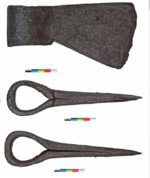
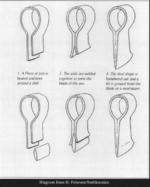
Sorry, hard to make out the mark in the pic. Some typical maker's marks found on French Biscayne axes...
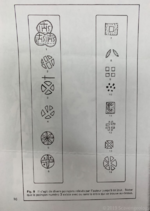
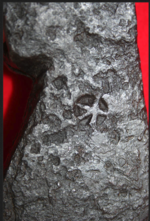
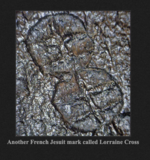
Too bad the poll is broken off at the eye, Terry. I've seen examples where the eye was flattened and cracked from pounding on the back, like the axe head was used and abused as a chisel or a wedge. Might be worth a look in the general vicinity to see if you can recover the missing piece... you may have already, just an old chunk of rusted iron, and just not recognized it.
Some other pics for comparison and a diagram of how they were forged. The crack in yours does look to correspond with the placement of a carbon steel face.


Sorry, hard to make out the mark in the pic. Some typical maker's marks found on French Biscayne axes...



Too bad the poll is broken off at the eye, Terry. I've seen examples where the eye was flattened and cracked from pounding on the back, like the axe head was used and abused as a chisel or a wedge. Might be worth a look in the general vicinity to see if you can recover the missing piece... you may have already, just an old chunk of rusted iron, and just not recognized it.

Last edited:
TerryEastTexas
Well-known member
I have looked at many many axes of the period and I find a lot of similarties but this axe would have been about 8" long and weighed over 2 lbs. Which makes me wonder if it might have been a felling axe. I finally found the design of the makers mark. Or there abouts it was so distorted I may be wrong. I know it looks like the Knights Templar. I also added what the eye might have looked like.

